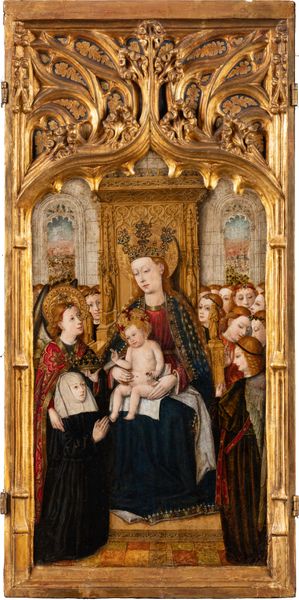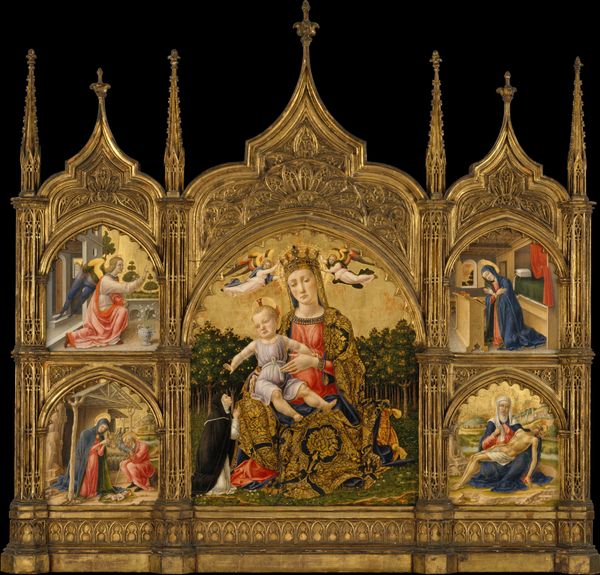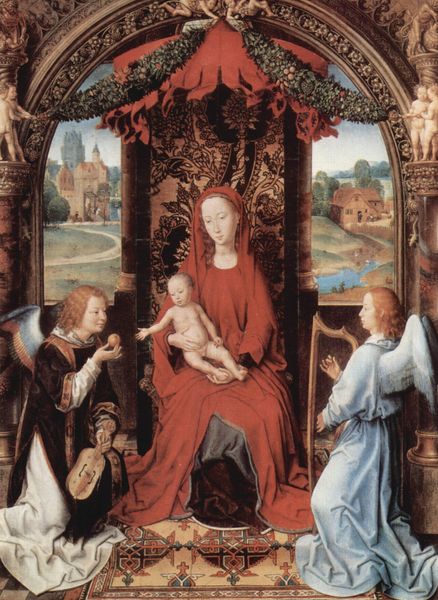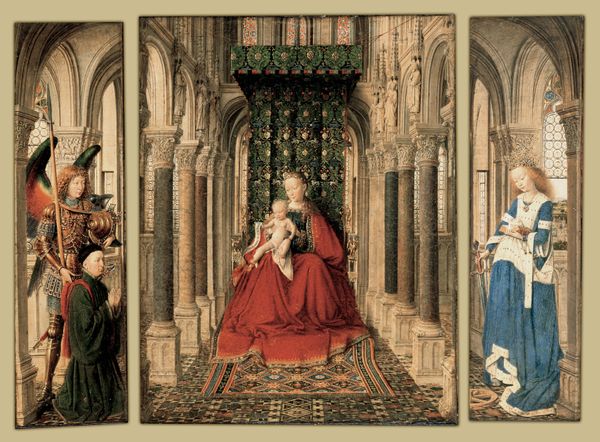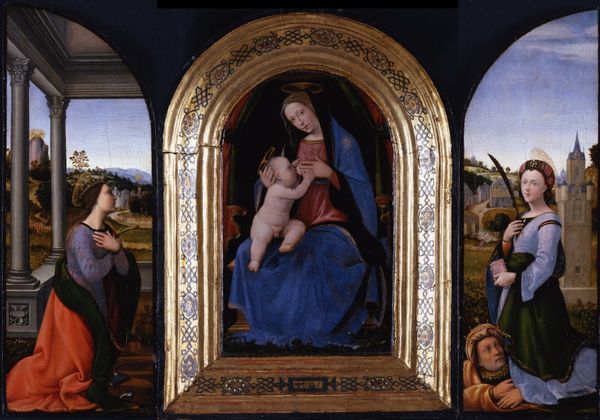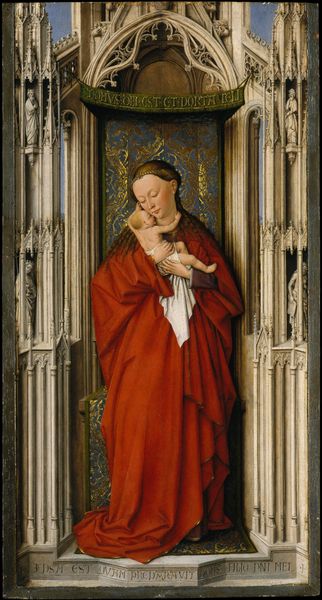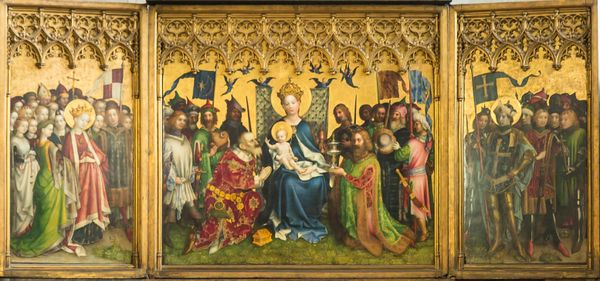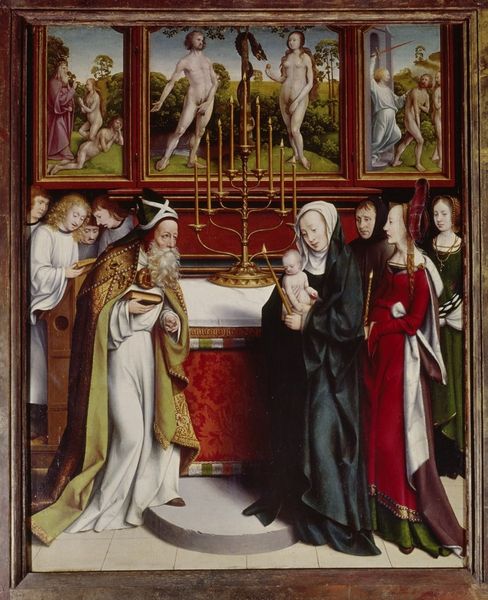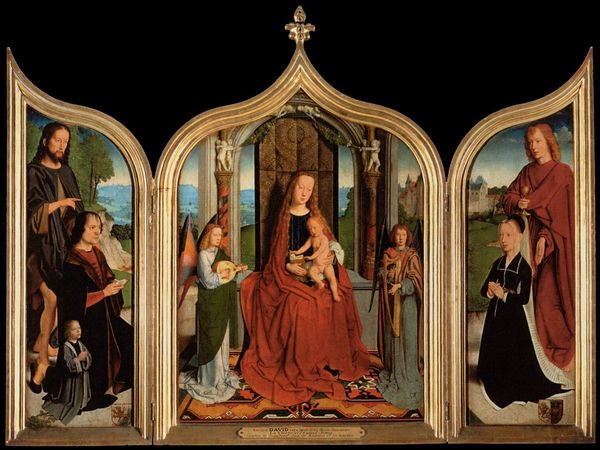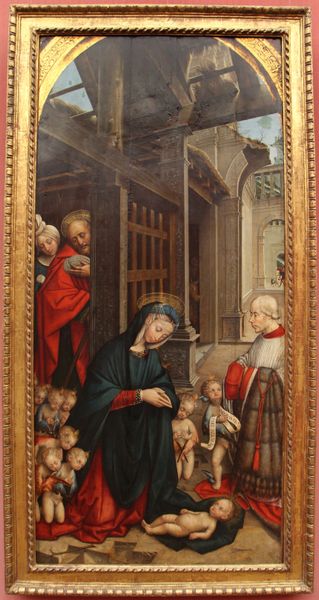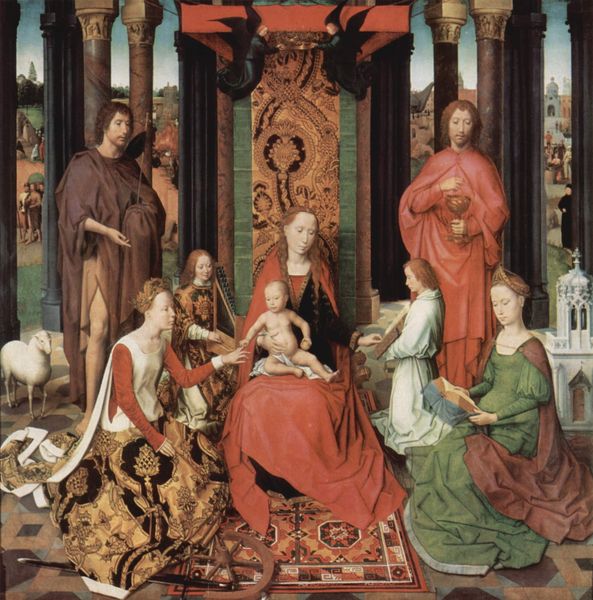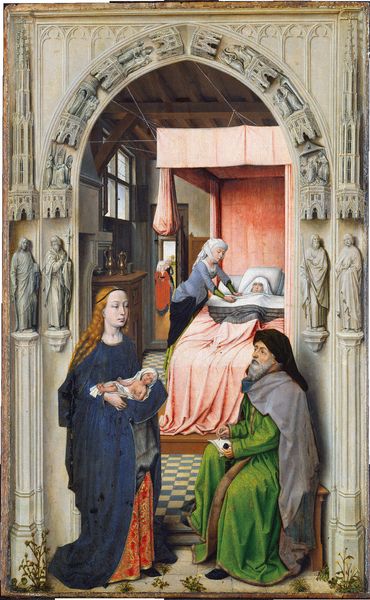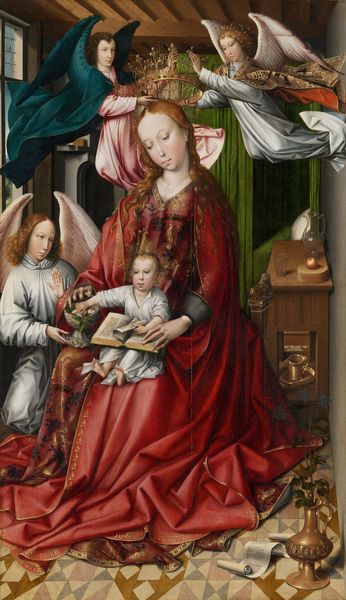
panel, tempera, painting
#
portrait
#
fairy-painting
#
medieval
#
panel
#
allegory
#
tempera
#
painting
#
child
#
12_15th-century
#
genre-painting
#
history-painting
#
international-gothic
#
miniature
#
angel
Copyright: Städelsches Kunstinstitut
Curator: Before us, we have a remarkable "Triptych with Virgin and Child Enthroned," crafted by Jacomart, likely between 1448 and 1458. This tempera and gold on panel piece invites us into a world steeped in the aesthetics of the International Gothic style. Editor: My first impression is one of awe; the detail is incredible. There's something both serene and powerfully hierarchical about the arrangement of figures and the radiant gold backdrop. It feels... deliberately constructed for a specific socio-religious narrative. Curator: Exactly! Jacomart’s placement within the cultural and social tapestry of 15th-century Valencia reveals his role in constructing these narratives. He wasn't just an artist; he was a cultural influencer, shaping visual piety in an era of evolving political dynamics. How might this imagery influence the socio-cultural understanding of the divine? Editor: Absolutely. The left panel, featuring an imposing Saint Michael vanquishing a very cartoonish devil, positions masculine might as crucial for defeating chaos and "evil". Meanwhile, the Virgin, centrally placed, reinforces the era’s fascination of holy motherhood. There is a clear message about social roles and power dynamics that uses both religious allegory and what we now recognize as implicit political and societal instruction. Curator: And look at the supplicants surrounding the Virgin, their gaze fixed, almost desperate. They represent the human need for divine intervention but also, the Church's role in mediating access to the divine. This is a powerful image speaking volumes about the intersection of faith, power, and social standing. Who was its intended audience and how did that impact composition choices? Editor: The historical context illuminates its political and social function within religious art patronage, undoubtedly meant for the Valencian elite as a display of piety. This piece is not just beautiful but also strategically manufactured to reinforce social structures, dictating behavior, worship, and perception, all through an aesthetic lens. Curator: Indeed. Looking closely, we see artistic and cultural negotiation as it reflects the desires of patrons in relation to established visual traditions. Thinking about the role of public art, this triptych encourages questions about its cultural impact. Editor: Reflecting on this piece, I'm left pondering the agency of both the artist and the commissioner of the work, considering the work within systems of class and devotional obligation. It asks us: Who benefits from its message, and what alternative interpretations might exist outside its intended sphere of influence? Curator: Absolutely, and how relevant that interrogation remains for us, even today, when considering contemporary artists and their role in constructing our realities.
Comments
No comments
Be the first to comment and join the conversation on the ultimate creative platform.
